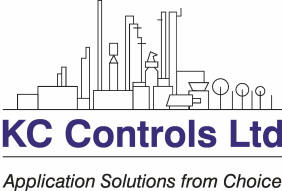The sensor is resistant
against harsh measurement applications. Combined with it's long
term stability, the sensor is ideally suited for installations
in the process- and air technology. An Ex-version is available
for potentially explosive systems. The most typical areas for an
application are:
Cooling towers
Protection against dust condensation in cooling towers.
(Important assumption: the sensor must resist against dust
setting).
Climatisation
Measurement and control of rel. humidity in building
automation.
Air conditioning in industrial processes
Most important is a long term accurate and maintenance
free r.h. sensor for exactcontrol of process humidity. (Long
term constancy of the sensor).
Grain drying plants
Grain is being stored in warehouses, at a too high humidity, it
would start to putrefy.
(Dusty air does soon cause a dirt coating on the sensor. There
must be a protection against it).
Gas sterilisation in medical technology
Medical instruments have to be sterilised after being
packed. Therefore they are exposed in chambers for example to
ethylene oxide. An accurate control of rel. humidity is
elementary to a good sterilisation. Due to the aggressive nature
of that gas, only few sensors such as the MÜTEC can be used for
this application.
Air conditioning in the textile industry
When producing textile fibres, the constant humidity is
important to prevent an adherence to the jets on the production
machine.
Tobacco industry
Storage and production rooms for tobacco.
(Corrosive and coating emissions of tobacco could affect the
performance of the sensor).
Food industry
Installation in dairies, in cheese fermenting and
storage rooms.
(Most sensors are destroyed by ammonia).
Fermenting chambers for bakery industry
Depending on the process, to accelerate speed of fermenting the
humidity is driven up exactly to saturation at room temperature.
(The sensor must be unaffected by condensing water).
Sensing r.h. and temperature in big mass-pig farms
Pigs react very sensitively to changes in temperature
and humidity, therefore the stables must be accurately
conditioned to prevent any disease. (Most sensors are destroyed
by ammonia dissolving from the animals excrements).
Tested measuring of organic compound
The calibration curve is influenced insignificantly or
not existing.
Measuring points at 30% and 70% r.h. concentration at 200 and
1000 ppm.
|
Deviation %
r.h. |
Acetone
Toluene
Isopropanol
Hexane
Methanol
Trochlorethane
Collosolve
Amyl Acetate
Carbon Tetrachloride
Formalin |
+
-
-
+
+
+
-
+
-
- |
1%
1%
1%
1%
1%
0%
1%
3%
1%
2% |
|


